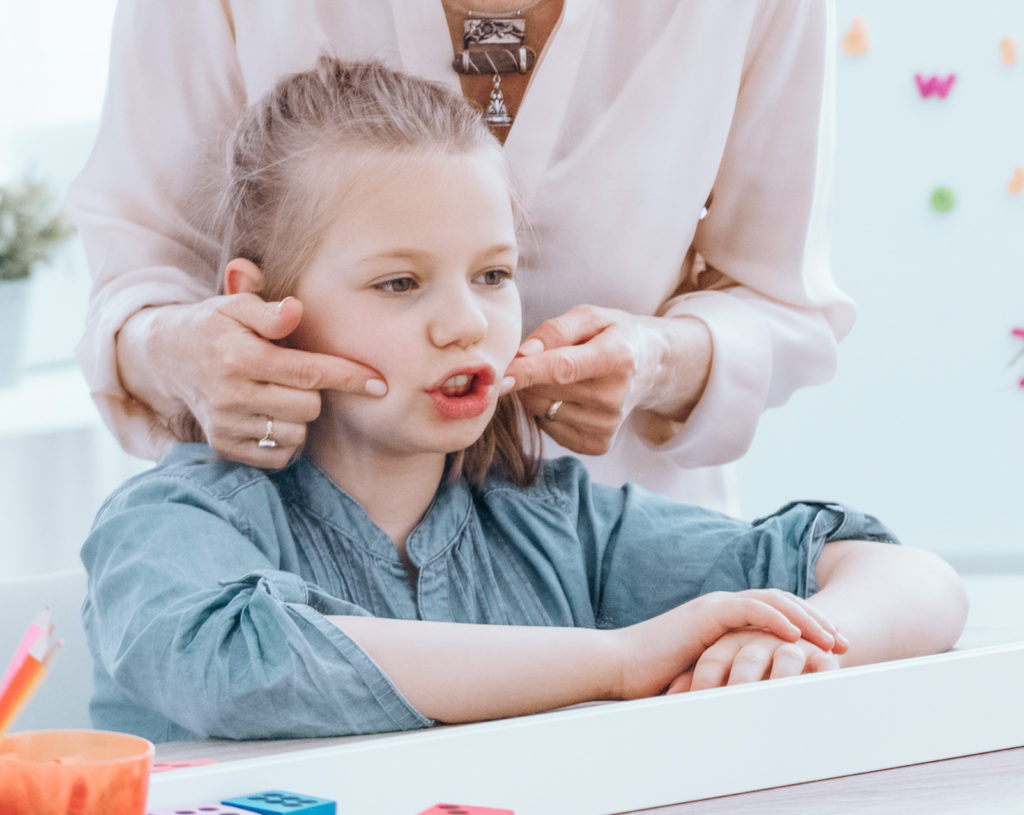It’s back-to-school time, which means a clean slate for many students (along with a satisfyingly pristine set of school supplies). However, it also can bring new, or renewed, concerns for parents about their child’s ability to communicate.
Children who have communication problems such as stuttering, voice control or difficulty swallowing may have trouble learning, or they may have difficulty making and keeping friends—which can negatively affect their academic and social success.

The Download on Communication Disorders
Communication disorders—which include hearing—
are among the most common disabilities and can affect a child’s ability to learn and succeed academically. The first step is to rule out hearing loss.
The good news is that help is available to qualifying children in schools at no additional cost to parents. But the process for securing these services—and the alphabet soup of terms that parents will encounter, such as IDEA, IEP and FAPE—can be a bit overwhelming.
If you have concerns about your child’s communication skills, you aren’t alone. Speech and language disorders are among the most common disabilities that school-age children experience. They are also highly treatable! Speech-language pathologists work with children in schools every day to help them reach their full academic and social potential. Here are some key points parents should know going into a new school year.
Children Have a Right to Services
School-age children who demonstrate a need and qualify (more on that later) have a right to receive services, according to the Individuals with Disabilities Education Act (IDEA) or civil rights federal law, Section 504 of the Rehabilitation Act of 1973.
These laws guarantee children the right to a free appropriate public education (FAPE). Most children with a disability receive support primarily through IDEA.
Parents or School Officials Can Initiate the Evaluation Process
The first step is evaluation. Parents can explain their concerns and ask a school official, such as their child’s teacher or the principal, for this evaluation. School personnel may also initiate this process by notifying parents that they think a child should receive an evaluation. Parents have to consent to their child being evaluated.
The school will then arrange for an appropriate team of professionals, including a speech-language pathologist, to evaluate the child’s skills and their impact on school performance. That team will provide their findings in a written report.
Three Factors Determine if Your Child Qualifies for Services
Based on the written evaluation report, the team of school personnel and parents will consider if the child qualifies for services by answering three questions:
- Does the child have a disability?
- If so, does the disability affect the child’s ability to take part in and make progress in school activities?
- Does the child need special education services in order to take part in and make progress in these activities?
If the school staff determine a child does not qualify and the parents disagree with the decision, parents may seek private services, request an independent educational evaluation, or ask for mediation.
Treatment Services are Documented in Formal Plans

If a child is deemed eligible, the team will work together to create a plan to help the child succeed in school. This plan can be an Individualized Education Program (IEP), a 504 plan, or both:
- An IEP contains goals to address a child’s unique needs. Those goals must be able to be measured and met within one school year. Tracking a child’s progress toward their IEP goals is ongoing, and parents will receive progress notes at each report card period.
On or before the child’s annual IEP date, the team (including parents) will determine whether services should continue into the following year—and what the new goals and services will be for that year. - A 504 plan provides children access to education support within the general education classroom setting. It may be developed and implemented when a child does not qualify for special education services, or it may be used to supplement an IEP.
Treatment Services Can Be Provided in Different Ways
For children with IEPs, treatment may occur in a one-on-one setting, in a group setting or both. Treatment may also occur inside the classroom, outside the classroom (e.g., a “speech room”) or both.
Treatment frequency can also vary. While one child may have one 30-minute treatment session a week, another may have four 10-minute sessions a week. The most successful approach differs based on the child. This will also be specified in an IEP.
A Bright Future
With treatment, children with speech and/or language disorders can achieve success in school—and life. As a general rule, the earlier treatment begins after an issue is suspected, the better the outcome. However, it’s never too late for a child (or adult!) to make progress with treatment.
Check with your school if you have concerns, so you can make this the most prosperous school year yet.
Stacey Ellison Glasgow, MA, CCC-SLP, is associate director of school services for the American Speech-Language-Hearing Association (ASHA).





